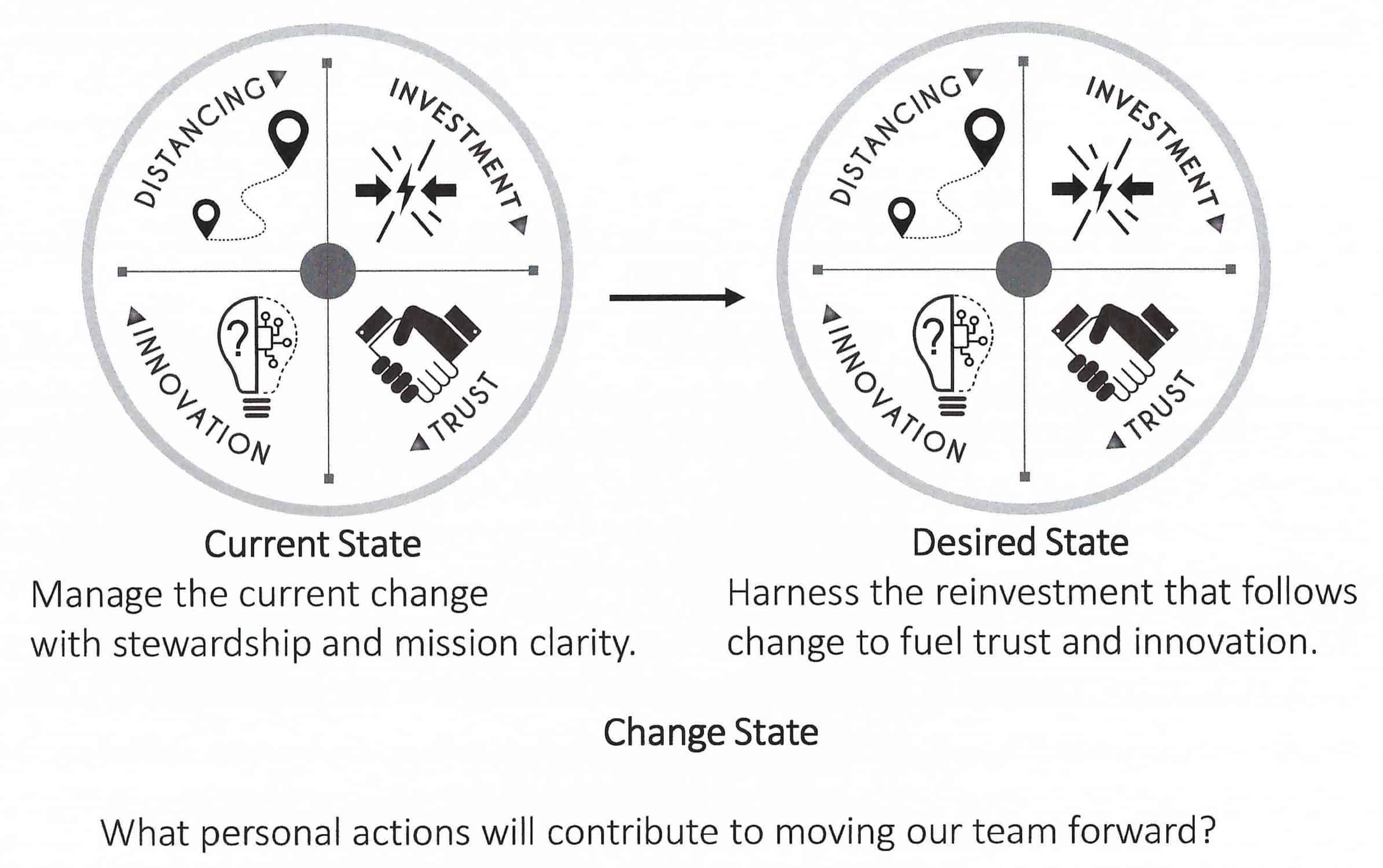
What current practices will cease to be relevant in the future?
The evolutionary nature of the world means that certain processes and practices will, over time, become less efficient or even obsolete. A strategic abandonment approach anticipates the waning of these norms even if the ways they will be replaced is not yet clear.
Where do we wish to be in the future?
Visionary leaders aim their focus through an educated and predictive lens. The future view generates the innovations needed to replace the processes and practices that are growing obsolete.
What practices in our ideal future are currently being implemented elsewhere in our industry?
There are always aspects of the future already being implemented in present, often by your competitors. Moreover, such discoveries are happening in other industries and can be applied to your team’s challenge. Adopting best practices is an example of making a more visionary colleague’s present a feature of your future. Even the most innovative teams are not always leading the pack.
What aspects of our current practices do we wish to retain in our future?
There’s no need to throw everything out when navigating a transition. The mission of a team is anchored in philosophy and values that operate like the keel of a boat by keeping it stable when waters are turbulent. Identifying these stability anchors creates a foundation for experimentation when it comes time to unleash exploration and discovery.
Anticipating our future, what actions will bridge the gap between our current state and our future state?
The transition from current state to future state does not happen with a flip of a switch. Certain activities, experiments and initiatives define the incremental movement through the change state. Strategic priorities guide specific tactics and timelines. Action planning becomes action taking and the current state moves through a change state and, gradually, to the desired future state.
Because change is constant, transitions are continual. The stage you are in clarifies what steps to take next. The cyclical cadence from tension to resolution ignites opportunities to think differently. Innovation is the inevitable result.

